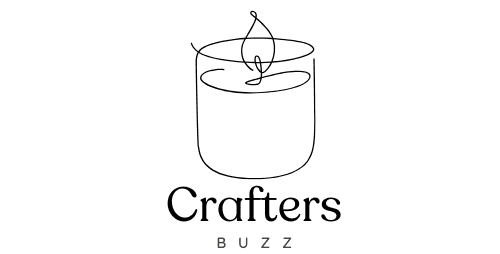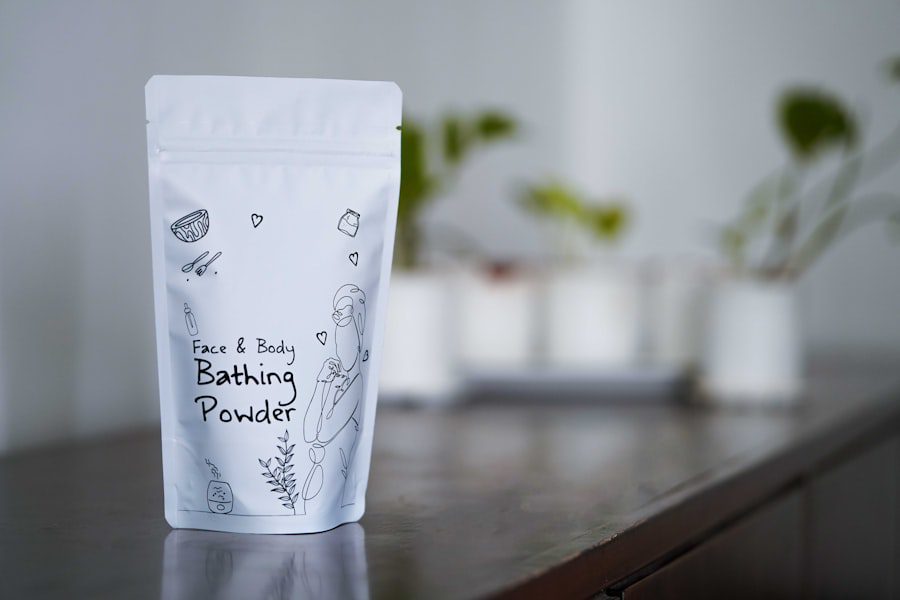Why sustainability is dominating the candle industry and which brands are leading the way.
In recent years, the candle industry has witnessed a significant shift towards sustainable practices, driven by a growing awareness of environmental issues and consumer demand for eco-friendly products. This transformation is not merely a trend; it reflects a broader societal movement towards sustainability that encompasses various sectors. As consumers become more conscious of their purchasing decisions, they increasingly seek products that align with their values, particularly those that minimize environmental impact.
This has prompted candle manufacturers to rethink their production processes, sourcing methods, and overall business models. The rise of sustainable practices in the candle industry is characterized by a commitment to using renewable resources, reducing waste, and promoting ethical labor practices. Many brands are now prioritizing the use of natural waxes, such as soy, beeswax, and coconut wax, which are not only biodegradable but also sourced from sustainable farms.
Additionally, companies are exploring innovative ways to reduce their carbon footprint, such as utilizing solar energy in production facilities or implementing recycling programs for used candle containers. This shift is not just beneficial for the planet; it also resonates with consumers who are increasingly willing to pay a premium for products that reflect their environmental values.
The Environmental Impact of Traditional Candle Production
Traditional candle production has long been associated with various environmental concerns, primarily due to the materials used and the processes involved. Most conventional candles are made from paraffin wax, a byproduct of petroleum refining. The extraction and processing of petroleum contribute significantly to greenhouse gas emissions and environmental degradation.
Furthermore, when burned, paraffin candles release harmful chemicals into the air, including toluene and benzene, which can pose health risks to consumers and contribute to indoor air pollution. In addition to the issues surrounding wax materials, traditional candle production often involves the use of synthetic fragrances and dyes, which can be derived from non-renewable resources and may contain toxic substances. The manufacturing process itself can also generate waste and pollution, particularly if proper measures are not taken to manage byproducts.
As awareness of these environmental impacts grows, consumers are increasingly seeking alternatives that offer a more sustainable approach to candle making. This has led to a surge in demand for candles made from natural ingredients and produced through environmentally responsible methods.
Leading Sustainable Candle Brands and Their Initiatives
Several brands have emerged as leaders in the sustainable candle market, each implementing unique initiatives to promote eco-friendliness and social responsibility. One notable example is P.F. Candle Co., which has gained recognition for its commitment to using domestically sourced soy wax and phthalate-free fragrances.
The company emphasizes transparency in its supply chain and actively engages in sustainable practices, such as using recyclable packaging and offering refill options for its glass containers. Another prominent player is Homesick Candles, known for its focus on creating scents that evoke memories of specific places. Homesick prioritizes sustainability by using natural wax blends and ensuring that its fragrances are free from harmful chemicals.
The brand also partners with organizations dedicated to environmental conservation, donating a portion of its profits to support reforestation efforts. These initiatives not only enhance the brand’s appeal but also contribute positively to the environment and society.
The Importance of Natural Ingredients and Eco-Friendly Packaging
The choice of ingredients in candle production plays a crucial role in determining the overall sustainability of the product. Natural waxes such as soy, beeswax, and coconut wax are favored for their renewable properties and lower environmental impact compared to paraffin. Soy wax, for instance, is derived from soybeans, a crop that can be grown sustainably and is biodegradable.
Beeswax is another excellent option; it is a natural byproduct of honey production and has the added benefit of purifying the air when burned. In addition to using natural waxes, eco-friendly packaging is essential for reducing waste and promoting sustainability in the candle industry. Many brands are now opting for recyclable or biodegradable materials for their containers and labels.
For example, some companies use glass jars that can be reused or recycled after the candle has burned down. Others have introduced innovative packaging solutions, such as seed paper labels that can be planted after use. By prioritizing natural ingredients and sustainable packaging, candle brands can significantly reduce their environmental footprint while appealing to eco-conscious consumers.
Supporting Fair Trade and Ethical Sourcing in the Candle Industry
The movement towards sustainability in the candle industry extends beyond environmental considerations; it also encompasses social responsibility through fair trade practices and ethical sourcing. Many consumers are increasingly aware of the importance of supporting brands that prioritize fair labor practices and ensure that workers involved in the supply chain are treated ethically. This includes fair wages, safe working conditions, and respect for workers’ rights.
Brands like GoodLight Natural Candles exemplify this commitment by sourcing their palm wax from suppliers who adhere to strict ethical standards. They ensure that their palm oil is certified sustainable and does not contribute to deforestation or exploitation of local communities. By supporting fair trade initiatives and ethical sourcing practices, candle companies can foster positive social change while building trust with consumers who value transparency and integrity in their purchasing decisions.
Innovations in Renewable and Biodegradable Candle Materials
The quest for sustainability has spurred innovation within the candle industry, leading to the development of renewable and biodegradable materials that challenge traditional practices. One such innovation is the use of plant-based waxes derived from sources like coconut or rapeseed oil. These materials not only provide an eco-friendly alternative to paraffin but also offer unique burning characteristics and scent throw.
Another exciting development is the introduction of biodegradable candle containers made from materials like cornstarch or recycled paper. These containers break down naturally over time, reducing waste in landfills. Some brands have even experimented with creating candles that incorporate natural elements like wood or herbs into their design, enhancing both aesthetics and sustainability.
These innovations reflect a growing commitment within the industry to explore new materials that align with eco-friendly principles while meeting consumer demands for quality and performance.
Consumer Demand for Sustainable and Non-Toxic Candle Options
As awareness of environmental issues continues to rise, consumer demand for sustainable and non-toxic candle options has surged dramatically. Shoppers are increasingly seeking products that not only enhance their living spaces but also align with their values regarding health and environmental stewardship. This shift is evident in market trends showing a preference for candles made from natural ingredients free from harmful chemicals.
The rise of social media platforms has further amplified this demand, as consumers share their experiences with eco-friendly products and advocate for brands that prioritize sustainability. Influencers and bloggers often highlight the benefits of choosing non-toxic candles, educating their audiences about the potential dangers associated with traditional candles made from synthetic materials. As a result, many brands are responding by reformulating their products to meet these expectations while emphasizing transparency in ingredient sourcing.
The Future of Sustainability in the Candle Industry
Looking ahead, the future of sustainability in the candle industry appears promising as more brands embrace eco-friendly practices and consumers continue to prioritize sustainable options. The ongoing evolution of consumer preferences will likely drive further innovation in product development, leading to new materials and formulations that minimize environmental impact while maximizing quality. Moreover, as regulatory frameworks around sustainability tighten globally, companies will be compelled to adopt more responsible practices throughout their supply chains.
This could include stricter guidelines on ingredient sourcing, waste management, and carbon emissions reduction strategies. The integration of technology into production processes may also play a role in enhancing sustainability efforts, enabling brands to track their environmental impact more effectively. In conclusion, the candle industry stands at a pivotal moment where sustainability is no longer an afterthought but a fundamental aspect of business strategy.
As brands continue to innovate and consumers demand greater accountability, the potential for positive change within this sector is immense. The journey towards a more sustainable future will require collaboration among manufacturers, consumers, and policymakers alike, but the momentum is already building towards a brighter, greener path for candles in our homes.
Sustainability is a hot topic in the candle industry, with many brands leading the way in eco-friendly practices. One related article that sheds light on the cultural significance of candles in European castles can be found here. Additionally, understanding the impact of candle wicks on burn time and quality is crucial for consumers looking for sustainable options, as discussed in this article here. By prioritizing sustainability, these brands are setting a positive example for the industry as a whole.
FAQs
What is driving the shift towards sustainability in the candle industry?
The shift towards sustainability in the candle industry is being driven by increasing consumer awareness and demand for eco-friendly and non-toxic products. This is also in response to the environmental impact of traditional candle production and the use of non-renewable resources.
How are candle brands incorporating sustainability into their products?
Candle brands are incorporating sustainability into their products by using natural and renewable ingredients, such as soy wax and essential oils, as well as eco-friendly packaging. They are also focusing on reducing their carbon footprint and minimizing waste in their production processes.
Which candle brands are leading the way in sustainability?
Several candle brands are leading the way in sustainability, including companies like EcoCandleCo, P.F. Candle Co, and Brooklyn Candle Studio. These brands prioritize using natural and sustainable materials, ethical sourcing, and environmentally friendly production practices.















